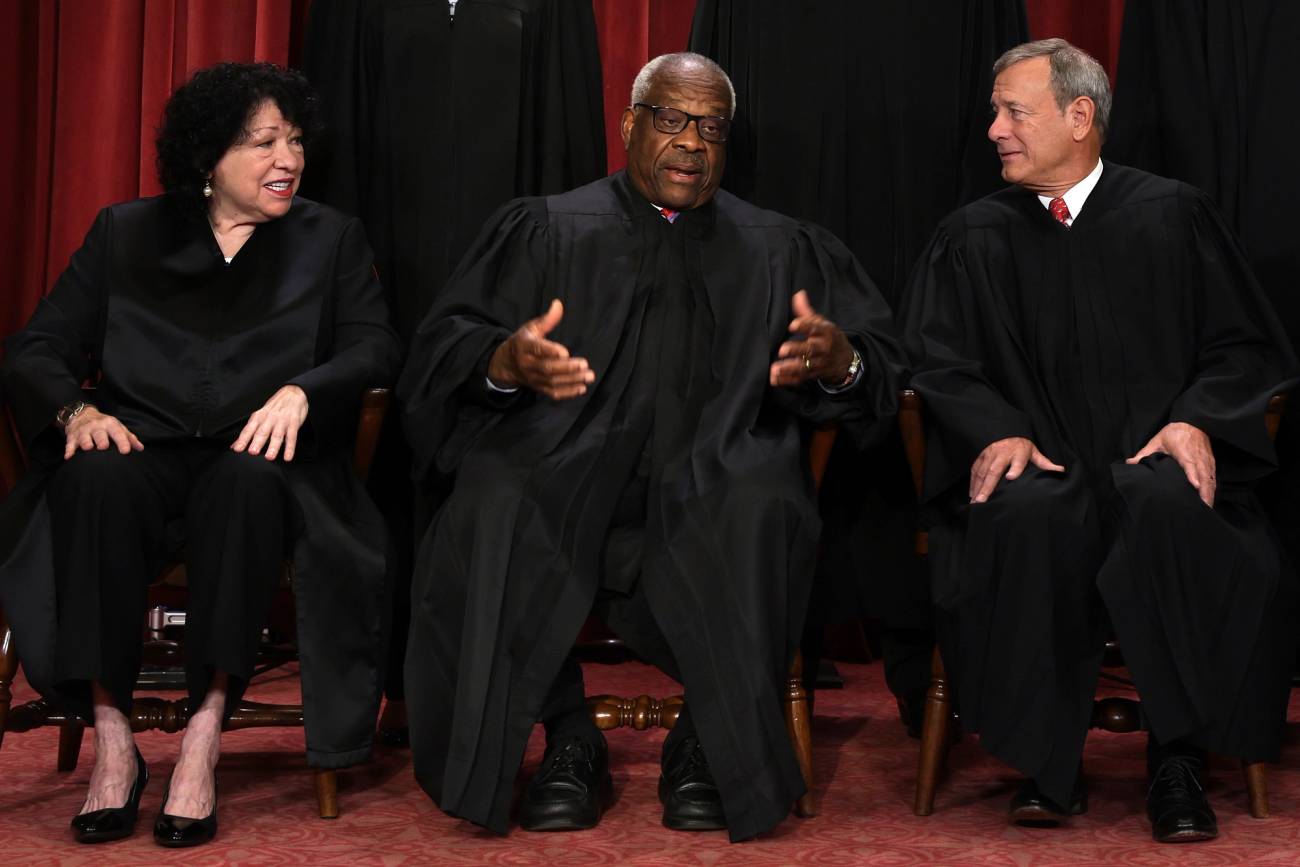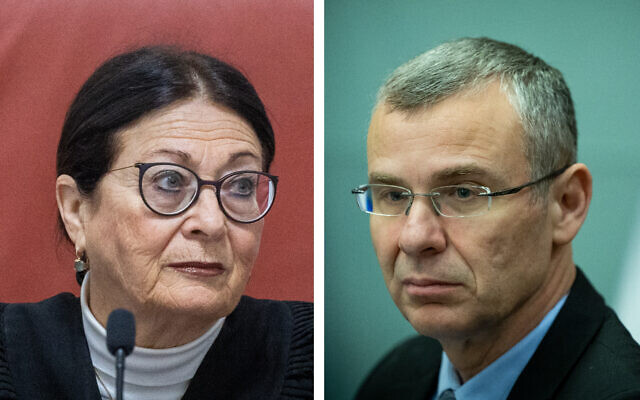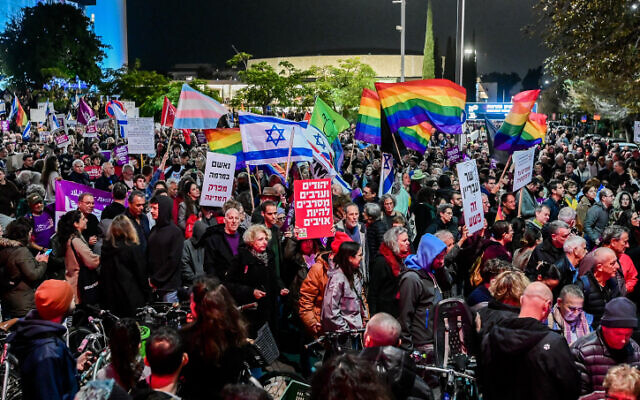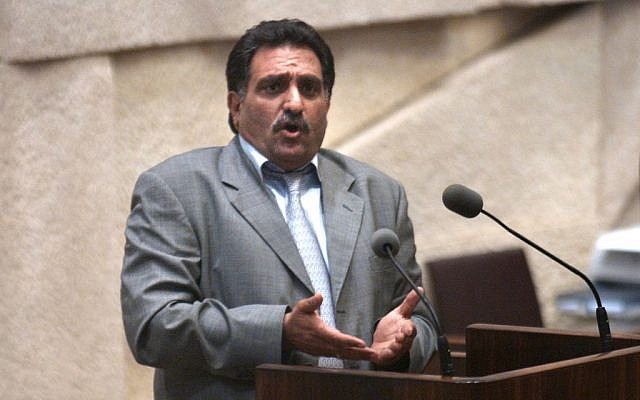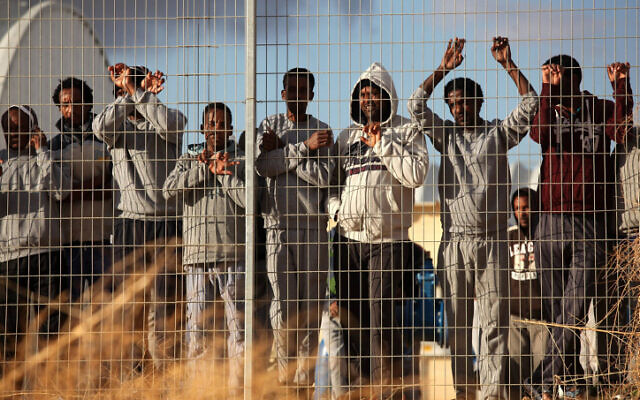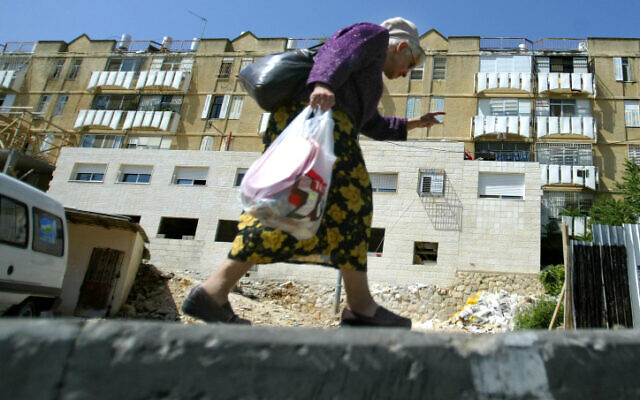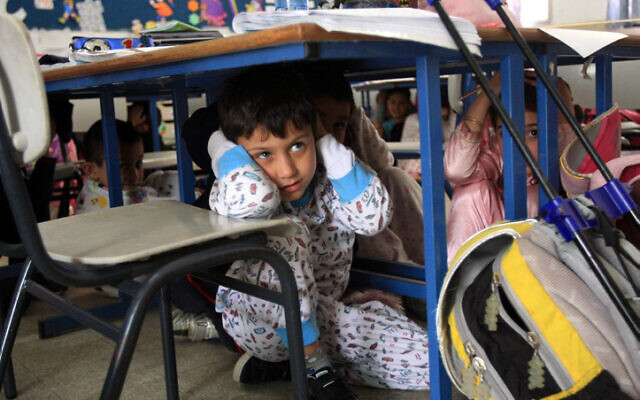 Niemcy–Polska–Ukraina: jak uniknąć kiczu pojednania?
Niemcy–Polska–Ukraina: jak uniknąć kiczu pojednania?
Anna Kwiatkowska, Wojciech Konończuk
Można liczyć, że pojednanie z Ukrainą będzie łatwiejsze niż z Niemcami, bo oba narody zbudowały ogromny kapitał zaufania w najtrudniejszym momencie. W stosunkach polsko-niemieckich dominuje zalew pustych gestów i przykrywanie nimi różnic, unikanie dyskusji i rozwiązywania realnych problemów.
.
Pojednanie Polaków i Ukraińców niezwykle przyspieszyło. Jego egzystencjalny kontekst sprawia, że jest to proces oddolny, autentyczny i obejmujący wszystkie warstwy społeczne. Mimo że wciąż jest dalece niezakończony, to sposób, w jaki przebiega, oraz zgromadzone już zaufanie, a także łączące Polskę i Ukrainę interesy w sferze bezpieczeństwa dają nadzieję na uniknięcie kiczu pojednania, którego nie udało się nam wyzbyć w stosunkach polsko-niemieckich. Fundamentalną nauką z doświadczeń tych ostatnich powinno być uzmysłowienie sobie, że droga do porozumienia jest długa i wyboista, a kluczowe znaczenie ma zaufanie i umiejętność zarządzania oczekiwaniami społecznymi.
Z Ukrainą łatwiej niż z Niemcami
Zacznijmy od krótkiej historii. Pojednanie polsko-ukraińskie zaczęło się znacznie później niż polsko-niemieckie, ale początkowo poszło tą samą drogą – oparte było na gestach i deklaracjach politycznych oraz dialogu środowisk intelektualnych. Zawsze jest to ważne i zawsze niewystarczające. Początkowo nie towarzyszył temu postęp w relacjach społecznych, zaś infrastruktura dla budowy wzajemnego zrozumienia (instytucjonalna, wymiana młodzieży etc.) znacząco odstawała od tego, co udało się zbudować w relacjach polsko-niemieckich.
Zaczęło się to zmieniać od 2004 roku, gdy pomarańczowa rewolucja, a następnie rewolucja godności rozbudziły polskie wsparcie dla Ukrainy. Potem była rosyjska agresja w 2014 roku, aż wreszcie w lutym 2022 wybuchła pełnoskalowa wojna. Bezprecedensowe zaangażowanie polskiego państwa i społeczeństwa w pomoc Ukrainie wywołało takiż bezprecedensowy odzew Ukraińców. Jeszcze przed wybuchem wojny Polacy byli na czele narodów najbardziej lubianych przez Ukraińców. Badania z ostatnich miesięcy pokazują jednak niebywały wzrost tych sympatii do poziomu około 85 procent. Analogiczny proces obserwujemy w Polsce, gdzie sympatia do Ukraińców osiągnęła poziom nigdy wcześniej nienotowany. Według niedawnych badań, po raz pierwszy w historii pozytywny stosunek Polaków do Ukraińców (69,1 procent) jest wyższy niż do Niemców (52,5 procent). Jednocześnie jedynie 5,6 procent Polaków negatywnie patrzy na Ukraińców, podczas gdy na Niemców 17 procent.
Znacząco poszerzyła się infrastruktura kontaktów społecznych. W Polsce osiadało okolo 1,5 milionów ukraińskich uchodźców i znacznie więcej się przez nasz kraj przewinęło. A przecież już przed 2022 rokiem Polska stała się domem dla około 1,5 milionów ukraińskich migrantów zarobkowych. Ich pracowitość i zachowanie pozwalały niwelować stereotypy i uprzedzenia po obu stronach.
Ogromny wzrost sympatii Ukraińców do Polaków wynikał z tego, że Polska w ich oczach okazała się przyjacielem sprawdzonym w czasie najtrudniejszej próby. W efekcie społeczeństwo ukraińskie patrzy dzisiaj na Polaków z ufnością jako na sąsiada, który miał wprawdzie historyczne przewiny, ale uczciwie się „nawrócił”, a dawne przewinienia z nawiązką „odkupił”.
Z kolei Polacy mają przekonanie, że trwająca wojna to również „nasza wojna”, a ich ukraińscy sąsiedzi walczą także za nich. W tej sytuacji obecne wcześniej napięcia, głównie te o charakterze historycznym, zeszły na dalszy plan, oczekując na czas pokoju. Naturalnym odruchem jest pragnienie, by nie zmarnowania tego potencjału na rozwój prawdziwego pojednania w stosunkach polsko-ukraińskich.
Trzeba zarazem przyznać, że pojednanie z Ukrainą ma inny ciężar gatunkowy niż z Niemcami. Ani Ukraińcy dla nas, ani my dla Ukraińców nie jesteśmy bowiem głównym „winowajcą”. Polacy i Ukraińcy są bowiem narodami „pomiędzy” Rosją a Niemcami i to te państwa dzierżą palmę pierwszeństwa w historycznych grzechach. Wynikające z historii problemy polsko-ukraińskie są więc mniejszego kalibru niż polsko-niemieckie, a więc o zgodę i porozumienie powinno być łatwiej.
Pojednanie czy „pojednanie elit”
Pojednanie między Polakami a Niemcami ma już wieloletnie doświadczenie, nie tylko powojenne, którego symbolem był list biskupów polskich. Od przeszło trzydziestu lat możemy obserwować proces zachodzący między wolnymi społeczeństwami i państwami. Bezsprzecznie w zbliżeniu polsko-niemieckim po transformacji mamy kilka wielkich sukcesów. Bazując na przezwyciężeniu powojennej nienawiści i „fatalizmu wrogości”, co już samo w sobie było niebywałym osiągnięciem, udało się po 1989 roku uzgodnić bazę prawną, w tym kluczowy traktat o uznaniu granicy. Do kategorii sukcesów można zaliczyć współdziałanie przy przystępowaniu Polski do Unii Europejskiej i NATO, ale także między innymi stworzenie sieci powiązań instytucjonalnych i wymiany młodzieży. Najważniejszym i najefektywniejszym była i pozostaje kwitnąca współpraca gospodarcza.
Dlaczego więc tak trudno zgodzić się ze stwierdzeniem Jarosława Kuisza i Karoliny Wigury, że „Polacy i Niemcy przeprowadzili po drugiej wojnie światowej jeden z najbardziej udanych procesów pojednania”? Odpowiedź ukryta jest w końcówce cytowanego zdania: „…a jednak oba społeczeństwa niemal nic o sobie nie wiedzą”. Skoro społeczeństwa nic o sobie nie wiedzą, to jaka jest jakość pojednania i z kim ono zaszło? Autorzy mają rację, że „potrzebujemy nowego, multilateralnego pojednania i partnerstwa z Niemcami”. Ale czy można mówić – jak piszą – że „pojednanie odbyło się na poziomie elit”? Nie można. I to nie tylko dlatego, że nie ma jednej „elity” ani w Niemczech, ani w Polsce. Coś jest nie tak z pojednaniem Polaków i Niemców, skoro punktem odniesienia powstającego nowego traktatu o współpracy i przyjaźni między Polską a Ukrainą jest niemiecko-francuski traktat elizejski, a nie umowa polsko-niemiecka z 1991 roku o dobrym sąsiedztwie.
Wiecznie żywy kicz pojednania
Przytoczmy jeszcze jeden cytat: „…w ten sposób powstaje nie tylko wykrzywiony, ale i paradoksalny obraz Polski w Niemczech: Polska to kraj cwanych handlarzy, mafiosów samochodowych, pijaków i oczywiście klerykalnych antysemitów, ale owi antysemici, handlarze i mafiosi są reprezentowani wyłącznie przez światłych, europejskich i proniemieckich intelektualistów…”.
Słowa te pochodzą z błyskotliwego artykułu Klausa Bachmanna dla dziennika „Rzeczpospolita” z 1994 roku [sic!], w którym autor, ówczesny korespondent austriackiego dziennika „Die Presse”, użył po raz pierwszy sformułowania „kicz pojednania”. Nawet po latach lektura tekstu jest bolesna, gdyż w wielu miejscach poraża swoją aktualnością: „Politycy i intelektualiści wolą mówić o współpracy, dobrym sąsiedztwie, o przyjaźni i – ze szczególnym upodobaniem robią to politycy niemieccy – o pojednaniu. Tymczasem dawne stereotypy zostają w umysłach, uzupełniają je nowe i w ten sposób za zasłoną dymną wielkich słów każdy myśli o drugim to, co zawsze myślał […] Problemów między Niemcami a Polakami nie rozwiąże milczenie ani unikanie drażliwych tematów, lecz żywe dyskusje i spory […] Zamiast się spierać, polscy germanofile i niemieccy polonofile utwierdzają się nawzajem w przekonaniu, że się kochają, wykluczając jednocześnie drażliwe tematy”.
Po dziś dzień źródłem problemów w stosunkach polsko-niemieckich jest zalew pustych gestów i przykrywanie nimi różnic, unikanie dyskusji i rozwiązywania realnych problemów. Egzemplifikacją tego jest uruchamiany regularnie niemiecki frazes o „myśleniu o przyszłości” i woli „pójścia do przodu” za każdym razem, gdy Polacy wysuwają jakieś konkretne postulaty czy żądania wyjaśnienia lub działania, a stronie niemieckiej to nie pasuje. Erika Steinbach forsuje powstawanie Centrum przeciwko Wypędzeniom, manipulując faktami i emocjami? Niemiecka odpowiedź: „Myślmy o przyszłości”! Polacy, Litwini, Ukraińcy argumentują o niebezpieczeństwach najpierw pierwszej, potem drugiej nitki gazociągu Nord Stream? „Nie demonizujmy projektu biznesowego”, „porozmawiajmy o polityce klimatycznej”. Nie podoba nam się system głosowania w Radzie UE i mamy lepszy pomysł? „Nie antagonizujmy, idźmy do przodu!”.
Podobnych przykładów jest bez liku. Teraz ten frazes powrócił przy okazji dyskusji o konsekwencjach uzależnienia Niemiec od Rosji i o pomocy wojskowej dla Ukrainy, którą i Polacy, i inne państwa wschodniej flanki uważają za nieprzystającą do niemieckiego potencjału. Lily Gardner Feldman, amerykańska badaczka z Uniwersytetu Johnsa Hopkinsa i autorka ważnej książki o pojednaniu w niemieckiej polityce zagranicznej, uważa, że pojednanie zawsze ma przyczynę. Strona inicjująca pojednanie kieruje się przesłanką moralną lub pragmatyzmem (czasami jednym i drugim). Patrząc na ostatnie dekady, trudno nie dostrzec, że w przypadku Niemiec dążenie do pojednania z Polską miało głównie (o ile nie wyłącznie) charakter pragmatyczny. Chodziło o zneutralizowanie przeszkody wizerunkowej dla Berlina wynikającej ze straszliwej historii, a zarazem skupienie się na przyszłości i rozwoju gospodarczym (z obopólną korzyścią), ale kosztem zmarginalizowania przeszłości.
Nie spowodowało to jednak, że między Warszawą a Berlinem zniknęły głębokie kryzysy. Brały się one z lekceważenia, ignorowania i paternalistycznego podejścia Niemców do Polaków. Ale także z braku polskiej szczerości w prowadzeniu dialogu, co wynikało z chęci unikania zadrażnień z sąsiadem wspierającym naszą integracje z UE i NATO. Nawet jeśli poruszano kwestie sporne, to w Niemczech zwykle bagatelizowano je jako niepotrzebne utrudnianie dobrze rozwijającej się współpracy. Kto chciał głębszych rozmów i wspólnej analizy był szkodnikiem. W konsekwencji naiwne okazały się nadzieje, że relacje polsko-niemieckie nadadzą nowy impuls rozwoju Unii Europejskiej. Efektu synergii i wartości dodanej nie stworzy się, jeśli partnerzy nie rozmawiają i nie traktują się po partnersku. Kolejnym negatywnym skutkiem była stopniowa radykalizacja języka i przekazu dotyczących Niemiec na polskiej scenie politycznej.
Do tego dochodził szereg stałych problemów, tak stałych, że istnieje obawa ich nieusuwalności. Nawet zwolennicy „zwyczajnego” sąsiedztwa, pozbawionego emocjonalnych albo katastroficznych tonów, nie mogli zrozumieć obojętności państwa niemieckiego na dojmujący brak wiedzy Niemców o Polsce i jej historii, na marginalną obecność Polski w niemieckich podręcznikach (w tym informacji o polskich ofiarach drugiej wojny światowej), nieprzestrzeganie umów o nauczaniu języka polskiego, niedotrzymywanie gwarancji równych praw przyznanych traktatowo Niemcom w Polsce i Polakom w Niemczech. Jedynie niemiecka wiara w polnische Wirtschaft osłabła za sprawą polskiego sukcesu gospodarczego.
Nie bez znaczenia był także nierozwiązany – według postrzegania ponad połowy społeczeństwa polskiego – problem braku odszkodowań czy zadośćuczynienia, co naruszało polskie poczucie sprawiedliwości, zgodne z przekonaniem, że po dokonaniu rachunku sumienia powinno być odkupienie win. Wspomniana Lily Gardner Feldman uważa, że w procesie pojednania „reparacje są pierwszym krokiem”.
Niewykorzystane okno możliwości
W drugiej dekadzie XXI wieku kryzysy finansowy i bezpieczeństwa wywołany aneksją Krymu i wybuchem wojny w Donbasie stworzyły nowe możliwości dla stosunków polsko-niemieckich. Wydawało się, że powstał nowy kontekst do rozwoju współpracy, gdyż kryzysy wymuszały zasadnicze zmiany w dotychczasowej polityce obu państw. Można było liczyć, że bliskie sąsiedztwo i członkostwo w UE i w NATO będą priorytetyzowane w konkurencji z relacjami i interesami z państwami trzecimi. Oraz że nie będzie powtórki z Deauville, gdzie w 2010 roku omawiano architekturę bezpieczeństwa Europy w trójkącie niemiecko-francusko-rosyjskim, czy z Mulino (centrum szkoleniowe rosyjskiej armii budowane do 2014 roku przez niemiecki Rheinmetall).
Jak wiemy, żadnego nowego otwarcia nie było. Niemcy zamiast na korektę postawili na kontynuację swojej polityki. Niemiecka transformacja energetyczna bazowała na rosyjskim gazie i bezkrytycznym przekonaniu o budowaniu „współzależności”. Rok po aneksji Krymu podpisano umowę o budowie Nord Stream 2, a Niemcy broniły go do ostatnich dni przed 24 lutego 2022 roku. Nie dało się być bardziej przeciwko polskim i, jak się szybko okazało, europejskim interesom. Polacy – niezależnie od poglądów politycznych – mieli zaś głębokie przekonanie, że niemieccy sąsiedzi prowadzą politykę podważającą polskie bezpieczeństwo. W przypadku relacji polsko-ukraińskich zachodzi proces dokładnie odwrotny – będący od 2014 roku na pierwszej linii frontu Ukraińcy swoją heroiczną obroną wzmacniają polskie bezpieczeństwo.
Nie powtarzać błędów
Po stronie niemieckiej i polskiej należy przynajmniej zastanowić się, jak naprawić popełnione błędy. Dla nas to szczególnie ważne, by nie powtórzyć ich w procesie współpracy i pojednania z Ukraińcami. Poniższa lista to zaledwie wyimek tego, co należałoby zrobić.
Po pierwsze, traktujmy się poważnie. Niemieccy partnerzy, choć może nie do końca świadomie, mieli dla nas przez te lata jasny przekaz – tym, o co apeluje strona polska i co jest dla niej ważne, zajmujemy się na poważnie wtedy, gdy sprawa stanie na ostrzu noża lub gdy dojdzie do poważnego konfliktu.
Po drugie, aktywnie działajmy na rzecz poszerzania wiedzy o sobie. Nie tylko motywujmy partnera do dofinasowania nauki języka polskiego i rewizji podręczników, ale też inwestujmy pieniądze polskiego podatnika w lepszą promocję polskiej kultury i historii. Lokujmy także środki i siły w analizę dotyczącą polityki, kultury, gospodarki partnera. Asymetria między znaczącą liczbą polskich niemcoznawców (z wszelkich dziedzin) i garstki niemieckich „polskoznawców” jest uderzająca.
Po trzecie, popularyzujmy zdobytą o sobie wiedzę. Rozpowszechniona teza, że polsko-niemieckie problemy wynikają między innymi z innej wrażliwości historycznej, jest fałszywa. Antypolskie refleksy obserwowane w Niemczech są wynikiem elementarnego braku wiedzy. Ignorancją popisują się również intelektualiści, mylący powstania w Warszawie, czy perorujący o 20 milionach Rosjan poległych w wojnie lub o tym, że Rosja jest ważniejszym partnerem handlowym niż Polska. Walka z antypolskim resentymentem w Niemczech jest też walką ze stereotypami. Także tymi opisanymi w tekście Bachmanna, które niestety są nadal obecne. Czy nie ma już polityków niemieckich zwalczających antysemityzm, neofaszyzm i nacjonalizm w Polsce, mimo braku ich objawów w naszym kraju w wymiarze, w jakim były (i są) obecne w Niemczech? To nie w Polsce płonęły schroniska dla uchodźców i nie w Polsce synagogi są chronione przed atakami przez uzbrojonych funkcjonariuszy.
Po czwarte, dywersyfikujmy źródła wiedzy i aktualizujmy zasoby. Niemcy najczęściej mają bardzo zawężony ogląd tego, co się dzieje w Polsce, bo od lat korzystają z tych samych źródeł informacji. I co chwila są zaskakiwani – a to zwycięstwami konkretnych partii w Polsce, a to kierunkiem dyskursu na jakiś temat. Bachmann ujął to trafnie w 1994 roku: „Kto reprezentuje Polskę w niemieckich gazetach? – Andrzej Szczypiorski i Adam Michnik. Z kim każdy niemiecki wysłannik musi robić wywiad, żeby się kwalifikować do grona polonofilów? – z Jackiem Kuroniem i ewentualnie jeszcze z Tadeuszem Mazowieckim. Wszyscy oni reprezentują – sądząc po ostatnich wyborach – około 10 proc. ludności polskiej i znajdują się akurat w opozycji. O intelektualistach, którzy reprezentują pozostałych 90 proc. – w tym rządzącą koalicję – niemiecki czytelnik jeszcze nic nie słyszał…”. Wystarczy dodać kilka środowisk intelektualnych, a przesłanie pozostanie w mocy. To pułapka, której powinniśmy uniknąć w stosunkach polsko-ukraińskich.
Po piąte, za porażkę i Polaków, i Niemców należy uznać, że tak łatwo można wykorzystać resentymenty. Choć badania wskazują, że Niemcy nadal cieszą się w Polsce sympatią, to jednak nad pytaniem, dlaczego tak łatwo jest wywołać antyniemiecki refleks, powinni zastanowić się nie tylko Polacy, lecz także partnerzy niemieccy. Jak to możliwe, że po trzydziestu latach ciężkiej pracy wielu niemieckich fundacji i instytutów, wydanych milionach marek i euro oraz przy tak silnym lobby proniemieckim (obyśmy stworzyli kiedyś takie propolskie w RFN), tak łatwo jest wywołać w Polsce antyniemieckie wzmożenie?
W stosunkach polsko-niemieckich doszliśmy do punktu, w którym cieszylibyśmy się z małych kroków w sektorowych dziedzinach współpracy, bez nadziei na wielką wizję wielkiego pojednania i przyjaźni we współpracy strategicznej. W najgorszym razie grozi nam ześlizgnięcie się w obojętność. Niczego to nie rozwiązuje, ale lepsze to niż jawna wrogość.
Wnioski dla pojednania polsko-ukraińskiego
Powróćmy do relacji polsko-ukraińskich. Pojednanie między Polakami a Ukraińcami pozostaje niezakończone, ale jego dalsze perspektywy są optymistyczne. Polska ma nad Dnieprem (a Ukraina nad Wisłą) taki kapitał społeczny, jakiego Niemcy w Polsce nie miały nigdy. 2–3 miliony Ukraińców mieszkających w Polsce tworzy olbrzymią siatkę połączeń między społeczeństwami, co wynika m.in. z większej podmiotowości Ukraińców w Polsce, niż „niewidzialnych”, zasymilowanych milionów Polaków w Niemczech. Można liczyć, że gdy wojna obronna Ukrainy w końcu się skończy, pojednanie będzie łatwiejsze, bo oba państwa i – co kluczowe – oba narody zbudowały ogromny kapitał zaufania, przy tym wykuty w najtrudniejszym, bo egzystencjalnym momencie.
Z problemów z polsko-niemieckim pojednaniem płyną ważne lekcje dla stosunków polsko-ukraińskich.
Po pierwsze, traktujmy się po partnersku, bo tylko to wzmocni zgromadzone zaufanie. Z ostatnich lat pamiętamy zarówno arogancję ukraińskich elit, czego symbolem mogą być słowa jednego z byłych ministrów spraw zagranicznych, że „Polska to terytorium między Ukrainą a Niemcami”, ale i polskie przekonanie o własnej wyższości. Wyzwaniem będzie też pobudzona wojną ukraińska asertywność.
Po drugie, nie należy zamiatać pod dywan spraw trudnych i wykluczać tematów drażliwych. Dialog bez szczerości niczego nie rozwiąże. Dyskusja o Wołyniu, najtrudniejszym temacie w polsko-ukraińskiego pojednania, bez wątpienia powróci. Można mieć jednak nadzieję, że bardziej pewna siebie, bo zwycięska Ukraina, będzie miała nie tylko więcej odwagi, ale i krytycznych historyków, którzy śmiało spojrzą w ciemne karty swojej historii.
Po trzecie, należy uzbroić się w cierpliwość, gdyż proces pojednania w każdym przypadku musi długo dojrzewać. Warto go pielęgnować i zacząć na przykład od uszanowania miejsc pochówków, zbudowania lub odnowienia krzyży nagrobnych, ustawienia (po obu stronach granicy) tablic z uczciwymi inskrypcjami.
Po czwarte wreszcie, należy się pogodzić z tym, że między każdymi, nawet najlepszymi sąsiadami są i zawsze będą sprawy sporne o różnym charakterze wynikające z aktualnego rozwoju ich relacji. Łatwiej będzie o nich dyskutować bez bagażu historycznego.
Wróćmy na koniec do Lily Gardner Feldman, która przekonuje, że pojednanie obejmuje rozwój przyjaznych stosunków, empatii i zaufania. Jeśli posługiwać się tymi kategoriami, to łatwo stwierdzić, że w procesie pojednania polsko-niemieckiego jedynie częściowo udało się wypełnić dwie pierwsze kategorie. Według niedawnych badań IBRIS tylko 20 procent Polaków uważa, że Niemcy są przyjazne wobec Polski, co oznacza znaczący regres. Zaufania zaś nie zbudowaliśmy. Ale nie możemy sobie pozwolić na bezsilne rozłożenie rąk, bo za dużo czeka nas współczesnych wyzwań w zmieniającym się gwałtownie świecie.
W przypadku pojednania polsko-ukraińskiego spełnione są zaś wszystkie trzy kryteria. Nie powinno nam to jednak przysłaniać tego, że w żadnym przypadku proces nie jest zakończony.
Zawartość publikowanych artykułów i materiałów nie reprezentuje poglądów ani opinii Reunion’68,
ani też webmastera Blogu Reunion’68, chyba ze jest to wyraźnie zaznaczone.
Twoje uwagi, linki, własne artykuły lub wiadomości prześlij na adres:
webmaster@reunion68.com


